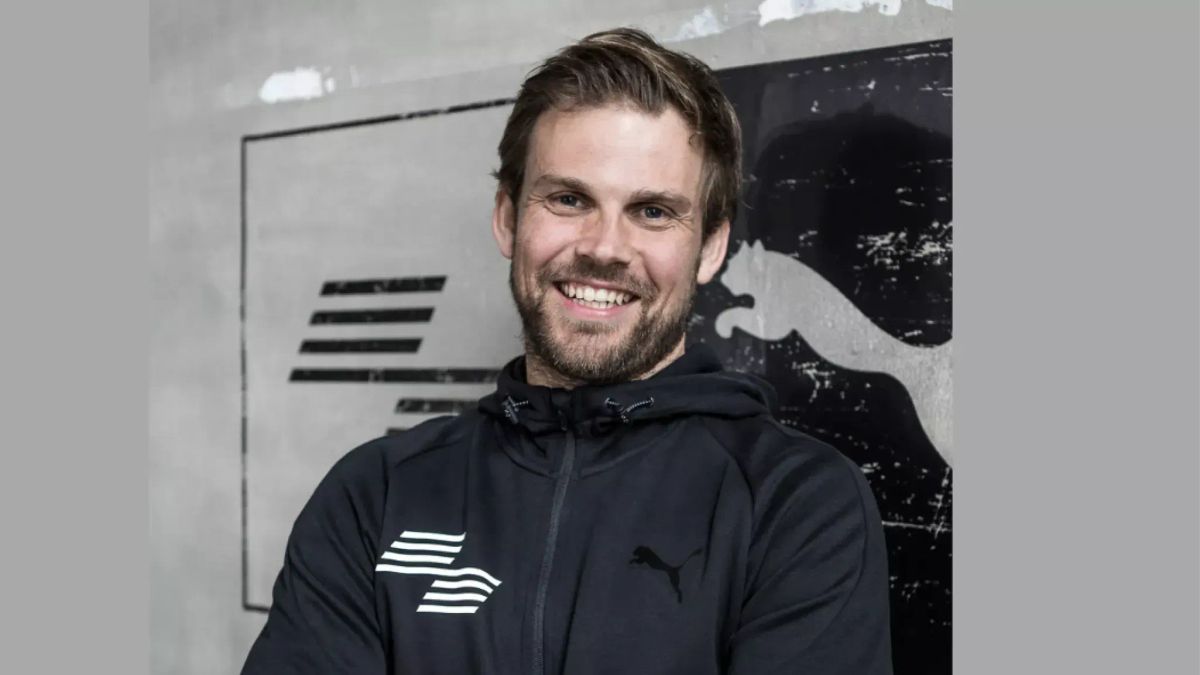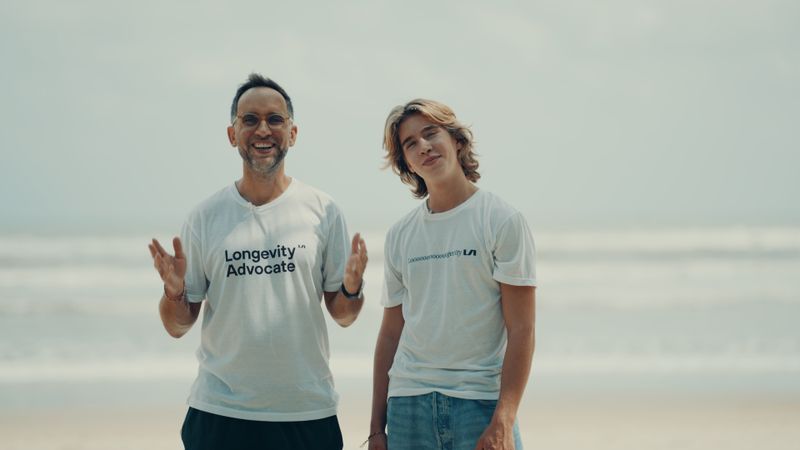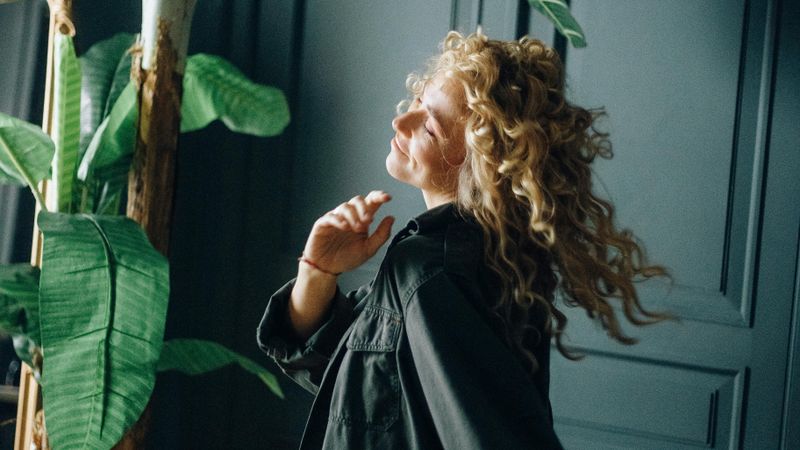Founder interview: Moritz Fürste, co-founder and CEO of HYROX

In our Founder Interview series, we showcase the brightest minds in preventive health, wellness, and longevity. In episode 2, we introduce Moritz Fürste, Co-Founder of the indoor fitness race HYROX.
Tell us a little about yourself and your current venture
I am Moritz Fürste, one of the co-founders of HYROX. In my first life, I was a hockey player; I played for the German national team for a long time and participated in three Olympic Games. That was my first life, as I sometimes say. I had a long and intense career in competitive sports and was able to gain many valuable experiences, both athletically and personally. Sport has always shaped me, but after my active career, the question arose: What now? In 2017, we founded HYROX, and since then, it has been my focus. We wanted to offer people who regularly go to the gym a new challenge – a kind of sporting goal that goes beyond mere training. Our vision is to establish Fitness Racing as a global sport vertical. A lot has happened in recent years, and more and more people are getting excited about this sport.
How do you manage to balance your business and your personal health as a founder and entrepreneur?
Yes, I believe that largely depends on the job. For me, extrinsic motivation plays a big role. Through my profession, I am surrounded every day by movement, fitness, and people who train. That motivates me tremendously! In our team, we often train together – whether it’s swimming during the lunch break or a short gym session after work. I notice that this social input helps to keep me going.
I am naturally more of a ball sport athlete, so I would normally prefer to arrange to play tennis or golf rather than go to the gym. But the incentive to participate in a HYROX event and improve my personal best drives me. It gives me a concrete reason to train. I am essentially my own guinea pig and can experience firsthand how much a clear goal increases motivation. Because nothing is more motivating than knowing: In a few weeks, there is an event – and if I don’t train, it will be quite a torment.
Do you do HYROX yourself, or do you combine it with strength training, CrossFit, or a mix of different training methods?
I mix a lot: cardio, strength training, and interval training. My training is strongly oriented towards HYROX, but of course, I am not a professional HYROX athlete. The sport is a very balanced mix of strength and endurance, which is why my training is broad-based. Any training that is structured holistically is basically a good HYROX training session. I try to incorporate specific elements from our competition, but also to remain variable to continually challenge the body in new ways.
This means for me concretely: I do a combination of classic strength training, functional exercises, and intense endurance sessions. I work a lot with intervals, as that is one of the main components of HYROX. A training session can, for example, look like this: First, I run a few kilometers at an easy pace, then follow some strength training sets – and finally, a crisp interval training session. This mix is ideal because it builds both strength and endurance.
And what is your personal health goal?
Simply to stay as fit as possible! As you get older, that becomes more challenging, and you have to put in more effort to maintain the same standard. My goal is to preserve my fitness level for as long as possible so that I can continue doing everything that I enjoy. I don’t want to have to limit myself and want to be able to participate in competitions for as long as possible.
But I also notice that as you age, not only physical fitness but also mental fitness plays an increasingly important role. That’s why I try to lead a balanced lifestyle – with sufficient sleep, good nutrition, and of course, regular training.
In addition, I believe that social interaction is an important component of health. Sport can be done in isolation, but in a community or with training partners, it is not only more fun but also helps you stay motivated in the long run.
Is there a fitness myth you would like to debunk?
Yes, a typical myth is that more training automatically brings better results. Many people overdo it and neglect regeneration. The body needs time to adapt and become stronger. Anyone who trains seven days a week without scheduling any recovery time will, in the long run, harm themselves rather than benefit. Quality over quantity is the key here!
You interact daily with people who participate in HYROX competitions, prepare for them, or are generally active in the fitness and health sector. What are some of the most exciting things you have learned from the community? Are there any particular stories or insights that have surprised you?
That is a very good question because we are indeed constantly learning, both on a structural and individual level. What personally impresses me the most is the range of participants. On one hand, we have absolute elite athletes who consider HYROX an extension of their professional training. On the other hand, there are people who have only discovered sport through HYROX. This diversity is incredibly inspiring.
A particularly impressive example is our oldest participant, an 83-year-old who started in the doubles format together with his daughter. He has proven that it is never too late to face new challenges. His attitude has inspired many other older people to also try HYROX.
Another important lesson is the significance of inclusion in sport. There are many people who feel excluded in traditional fitness environments, whether due to a lack of sporting background, social barriers, or insecurities. HYROX has managed to create a community where everyone feels welcome. Many participants tell us that they used to go to the gym for years, but only through HYROX did they have a real goal in sight and therefore train with much more motivation.
Were there any specific pieces of feedback from the community that led you to further develop or adjust HYROX?
Absolutely. One of the most important insights was that many participants regard the training as just as important as the competition itself. That led us to integrate HYROX classes into more and more gyms worldwide. It’s not enough just to offer events; people need a structured way to prepare, to become familiar with the format, and to see progress.
Another point was the demand for different performance levels. We realized that there cannot be just one elite or beginner category. That’s why we introduced different categories, including doubles and relay formats, which allow beginners to enter the sport. This has significantly lowered the barrier for newcomers.
What trends or technologies do you see as potential game-changers in the coming years, whether for HYROX or for the fitness industry in general?
I think the greatest potential lies in data integration and personalization. Today, many people track their workouts with smartwatches, but the possibilities go far beyond that. I envision that in the future we will see many more personalized training recommendations based on real-time data. For example, a platform could analyze how you perform in a HYROX event and then tell you exactly which training adjustments you should make to compensate for your weaknesses.
Another exciting area is artificial intelligence in training. There are already systems that give you real-time feedback on your running technique or strength training. This will continue to develop and ensure that people can train even more efficiently without necessarily having a personal trainer on-site.
Is there another fitness myth that you would like to completely dispel?
Yes, namely the myth that more is always better. Many people think that they have to train hard every day to make progress. But recovery is just as important as the training itself! Without sufficient regeneration, the body cannot make progress. Quality always comes before quantity.
A second myth is that HYROX is only for super fit athletes. That simply isn’t true! Our event format is designed so that everyone can participate, regardless of their fitness level. The only opponent is yourself and your own time from the last event.
Can you give us an insight into your daily routine?
Yes, of course, gladly. I am, of course, very branded when it comes to my fitness routine, but at the same time, I try to keep everything as structured and efficient as possible. If I am not injured or sick, I have a fairly standardized routine. I get up at 6:30 in the morning with the kids and walk them to school. Most of the time, they ride their bikes while I accompany them on foot. Depending on how I feel that day, I then run between 5 and 10 kilometers. If it’s too cold or the weather is extremely bad, sometimes I even take the car. Afterwards, I go directly to the gym, which, luckily, is nearby.
Are you more of a morning person when it comes to sport?
Yes, definitely. My routine is to train between 8 and 9 in the morning. I track my metrics with Amazfit, our partner. It can essentially do everything that other fitness trackers can. The topic of sleep especially interests me a lot. Since I started tracking my sleep, I have been much more focused on getting enough sleep. I almost see it as a challenge: I want my sleep score to be good. And if there’s an opportunity to optimize it, then I certainly try to do so.
Besides the gym and running – are there any other sports that you regularly engage in?
Yes, once a week I play tennis. Otherwise, I try to incorporate other sporting activities whenever the opportunity arises. But my main focus is definitely on my running and strength training routine. Apart from that, I spend a lot of time in the office and on weekends I am usually somewhere on a sports field.
Do you regularly get health check-ups, or do you wait until something is wrong?
Yes, absolutely! I just had a comprehensive blood test done this week. After reviewing the results, I took high-dose magnesium and two or three other vitamins because I was at the very low end. It’s all done as a preventive measure; I don’t do it very regularly – I would say I take the time for it every two years. Of course, it would be ideal to do it more frequently, but that is currently hard to implement. Especially during the winter months, my vitamin supply is an important topic. Magnesium is particularly crucial for me because I have a high demand, especially in combination with intensive training sessions.
What about dietary supplements? Is there anything that you supplement on a permanent basis?
Yes, but I keep it relatively simple. I regularly supplement with Vitamin D and Magnesium, nothing else. My wife is a naturopath and osteopath, so we do a lot in the area of gut health and prevention. She guides that a bit for me. We also work with probiotics and prebiotics to keep the gut flora stable.
Do you view it critically that many people try to optimize their health to an extreme?
Yes, I believe that many people overdo it. They take 50 different supplements and try to optimize every little detail. But ultimately, it is the basics that really count: sufficient sleep, healthy nutrition, regular exercise, and a good balance in life. About 80 to 90 percent of health comes from these fundamentals. The rest may be relevant for some, but for most, it is not necessary.
Which books or podcasts have particularly inspired you on your journey?
I have spent a long and intensive time with the books of Yuval Noah Harari. Homo Deus and Sapiens particularly impressed me. In addition, I found Factfulness by Hans Rosling very exciting because it offers a more optimistic view of the world. I am generally a fan of not only focusing on the negative but also highlighting the positive. Unfortunately, in our society, only the negative is often discussed, even though there are many advances.
How do you see the difference between the positive feedback in sports and the often critical feedback in the professional world?
I study the science of positivity – if you can even call it that. I often criticize the constant emphasis on everything that isn’t going well without also focusing on the positive things. We paint such a distorted picture that it seems as though the world is constantly on the brink of disaster. Yet, if you zoom out, you could actually conclude that the world has never been better. This perspective is particularly important to me – whether in sports or in entrepreneurship.
In sports, you constantly receive feedback in all directions. When you are a child and score a goal, your entire team gets excited, hugs you – even if it is sometimes not phrased very nicely, you still feel the positive feedback. In the professional world, it is different: Here, praise is rarely given. Instead, there is often criticism, even when you have done something right. I believe that companies and leaders could learn a lot from the way successes are celebrated in sports. That would not only boost motivation but also foster a more positive corporate culture.
Author: Karol Domagalski
Family and health first. Big on sports, nutrition, longevity, travel, and all things digital. Founder of New Zapiens, on a mission to help people live their best lives.




